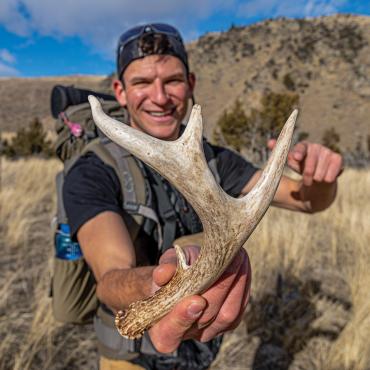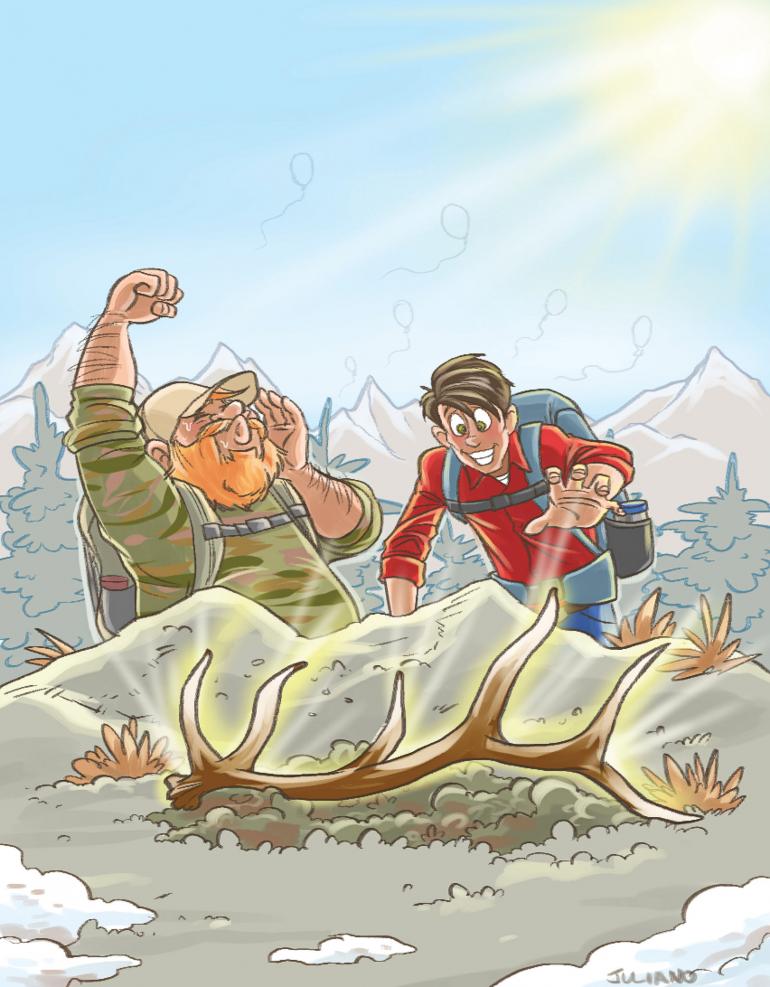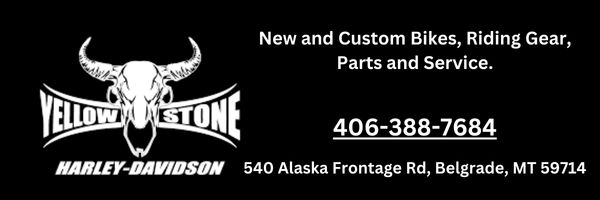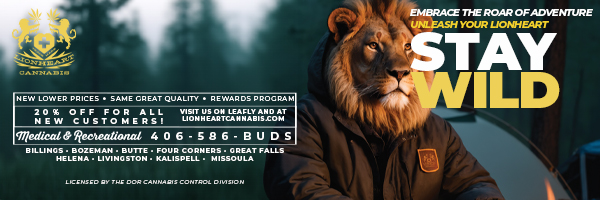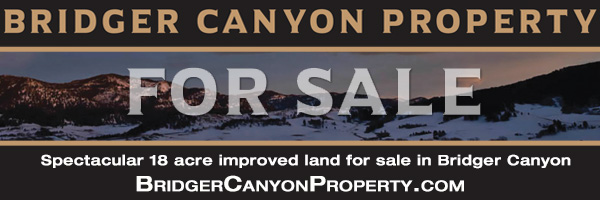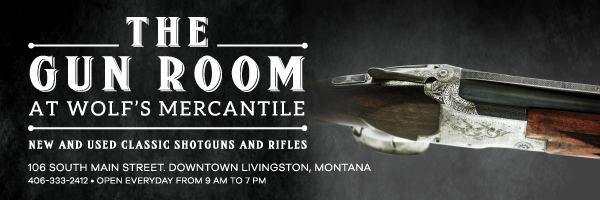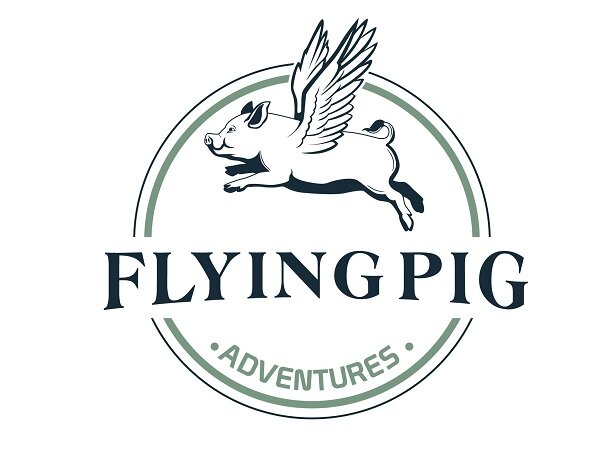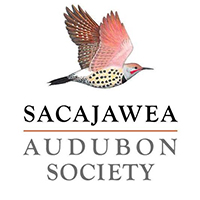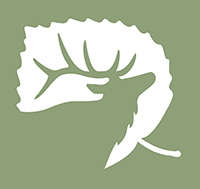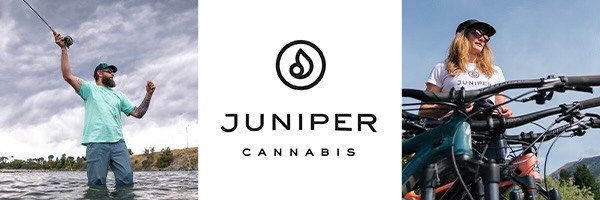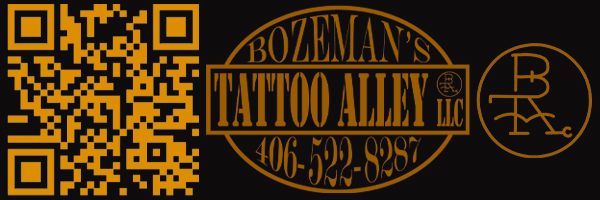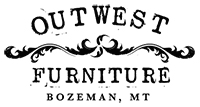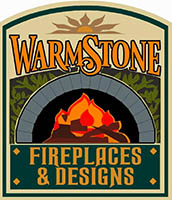Diamond in the Rough
Forming unlikely connections in the Montana woods.
A hike with a hunter is not your typical mom-and-pop stroll. Animal tracks and signs, indiscernible to most people, stick out to the hunter like a white grocery bag in a field of wheat stubble. Operating with all his senses, the hunter pieces together bits of information to infer the nearly invisible movements of game across the landscape. Shrouded in camouflage, he stalks through the woods, making but the faintest of sounds as he closes in on his prey. At least that’s what I thought, until I met Chud.
Our unlikely union occurred in an even more unlikely place: a packed college chemistry lecture hall. It was the first day of spring semester, freshman year, and I singled out Chud by his camouflage hat—which served the opposite of its intended purpose in a classroom full of affluent Birkenstock-clad students. Rarely, as I’ve discovered, do hunters shed their camo garbs, opting instead to proudly wear them to all their frequent haunts: the liquor store, the tobacco aisle, and the occasional chemistry class. Only in a few places—the woods, Bass Pro Shops, and monster-truck rallies—do they truly disappear into their surroundings.
Shed hunting, as I quickly discover, is just an excuse for hunters to hike in the woods when no game animals are in season.
I snagged a seat next to him and introduced myself, proudly flaunting the rainbow trout adorning the front of my t-shirt. Turns out we were both from Colorado, and not too far apart. I hail from the bustling Denver metropolis, while Chud was from a small nearby mountain town where “family trees don’t fork.” Somewhere along the way he picked up the endearing nickname Chud. From his unkempt beard and burly physique, I could tell that he was a born-and-raised outdoorsman—exactly the kind of person I was hoping to find in the endless sea of hipsters with whom I shared my cramped freshman dorm. By the end of class, my notebook was still empty, but we had planned a trip to the mountains to hunt for elk antlers, or “sheds” as they’re called in his neck of the woods.
A few weeks later, Chud and I lean against his truck on a nondescript Forest Service road deep in the recesses of the Absarokas. Chud has me under an oath of secrecy: if I ever told anyone about this place, he would have to kill me. Not a threat to be taken lightly from someone rocking a 9mm on his hip.
“If you see a balloon, pick it up,” Chud commands me.
“I thought we were looking for antlers!” I quip back.
“Forest karma!” Chud yells, but he’s already halfway into the streambed below, tangled up in a mess of budding willows and more species of prickly plants than I knew existed.
Shed hunting, as I quickly discover, is just an excuse for hunters to hike in the woods when no game animals are in season. Like I said, though, a hike with a hunter is no walk in the park. Chud keeps a pair of binoculars strapped to his chest and spends as much time crawling on his knees as he does standing. He’s searching for hoof prints, elk droppings, and trees stripped of bark: all signs that bull elk have been in the area recently. He’s wearing a military-surplus camo hoody to break up his silhouette, concealing his location from both the elk and other people. Compared to Chud, I look like an escaped circus clown, clad in my blue jeans and a bright red t-shirt. I make a mental note to at least wear dull shades of clothing next time.
We traverse our way up an exposed south slope toward a shaded clump of timber on the ridge above. It’s a surprisingly hot day for mid-March, but not unusual for this corner of country. The sun blares down from its perch overhead and heat radiates off the jagged cliffs bands stacked along the canyon walls. I drain my water bottle before we’re even halfway up the ridge. Over 700 feet of vertical elevation still looms overhead. I feel remarkably out of place here in the rugged, andesite-torn draws that the local ungulates flourish in.
“It’s hotter ’n two mice fuckin’ in a wool sock!” Chud exclaims. He’s a big guy and sweat flows freely down his face, saturating his scraggly blonde scruff.
“So what exactly should I be looking for?” I ask.
“Anything that doesn’t fit in,” he replies matter-of-factly. I hardly know what an elk antler looks like, let alone whether I can pick one out of the mess of branches and logs littering the forest.
As the days shorten in August, antlers mineralize completely into bone and the bulls clash them against trees and each other, eviscerating the velvet and leaving troughs in the bone in place of veins.
Bull elk grow antlers every year, only to break them off in late winter, providing shed hunters with their quarry. Unlike most wild game, however, antlers don’t end up on charcoal grills. Instead, they’re sold to dealers who cleave their premium “brown” inventory into expensive dog-chews and pulverize the rest for export to China as “dietary supplements,” or what we would call aphrodisiacs. Humans have valued antlers for their growth-inducing properties for thousands of years, and it’s no surprise why: during the peak of summer, they can grow up to an inch a day as the bull’s testosterone level rises in preparation for the autumn rut, or mating season. Larger bulls can even experience seasonal osteoporosis as their antlers draw calcium from other parts of their bodies. Elk haul these protruding masses of bone with them all winter, until their testosterone levels drop and the cartilage weakens enough that the antlers snap off.
Chud waits for me as I struggle to the top of the hill. He’s humming the lyrics to “Save a Horse, Ride a Cowboy,” one of the many pop-country songs in his seemingly endless repertoire. I pause to catch my breath and notice a glint of silver plastic tangled around the trunk of a small spruce: a balloon! The wind probably plucked out it of a child’s hands in Bozeman or Missoula and plopped the deflated plastic sphere on this barren hillslope in the middle of goddamn nowhere. I shove the balloon into my backpack pocket.
“Now we can start looking for antlers!” Chud exclaims. I dismiss it as superstition. Just another myth from Mr. Mountain Man.
But as we traverse the top of a south-facing draw toward a gurgling spring, sure as shit, there’s an antler resting in the soft vegetation, tines pointing skyward toward the elk gods who presumably saw our philanthropic deed and plopped the bone smack-dab in front of us.
Chud and I yell in excitement, then high-five, fist bump, and bro-hug. Then we take a few breaths to calm down.
I drop to my knees and admire the antler resting in the musty pine duff. I grasp it in my hands and examine the complexion: dark chocolate brown at the base, blending into a dirt-tan coating before washing out into a milky white at the tips of the tines. There are six of these tines, each splaying skyward as if still warning other bulls to steer clear. The antler’s pedicle, or base, is lined with a soft ring of fat and cartilage, and traces of dried blood spill from capillaries at the site of the break: a clean, angular snap in the bone. I trace my fingers along the smooth crests and valleys, carved intricately into the bone like miniature mountain ranges. The texture is a remnant of the summer growing season when antlers are covered by a venous leathery coating called velvet. The velvet carries a lattice of blood vessels to the growing cartilage, which is still soft and fragile. As the days shorten in August, the antlers mineralize completely into bone and the bulls clash them against trees and each other, eviscerating the velvet and leaving troughs in the bone in place of veins.
Over our hard-earned miles together, I realized the friendships that can stem from a shared love of the outdoors, and the value in sharing knowledge and experiences with those around us.
I strap the antler to my backpack, adding nearly ten pounds of weight. Fresh brown antlers command $20 per pound from dealers, and even more from furniture makers who carefully craft them into chandeliers for ultra-wealthy Big Sky “ranch” owners who want to bring the Wild West into their living rooms for guests to admire over happy-hour cocktails. Find both antlers from a single elk, and those same plutocrats will pay over $1500 for a matched set if it’s truly unique. Chud, however, refuses to sell his antlers, opting instead to pile them in his room alongside other bits of skulls and feathers—each one conjuring the memory of another day spent in the woods. Perhaps he thinks they will enhance his sex appeal, as they do for the elk who carry them.
“It’s bad luck if you sell them,” Chud tells me. I think of the beautiful antler strapped to my pack and this time, I’m inclined to believe him.
Like all other tracks in the forest, those of Chud and myself eventually parted ways—but not before leaving hundreds of miles of crisscrossing boot prints across a smattering of Montana mountain ranges. Like all growth—antler, animal, and human alike—ours was ephemeral but formative. In our four years trudging up mountains together, I eventually traded in my clown attire for drab colors—and even a camo hat. I learned to tell the difference between a whitetail and a mule deer, and I discovered by scrapes and bruises that ridges are more effective pathways than creek bottoms. Over those hard-earned miles, I realized the friendships that can stem from a shared love of the outdoors, and the value in sharing knowledge and experiences with those around us. I even collected a nice pile of antlers—much to my roommates’ chagrin—which serve as mementos for my own experiences in the woods. More importantly, though, I now have an endless repertoire of crappy pop-country songs and timeless jokes that are sure to serve me well when I’m a dad sometime down the road—if all that antler dust works its magic, that is.

